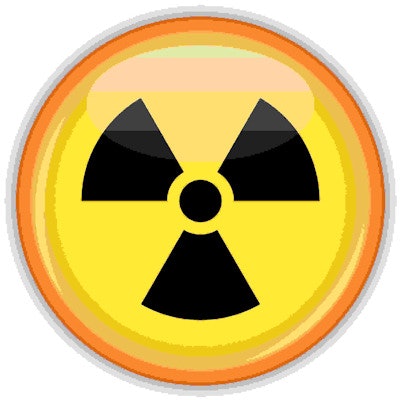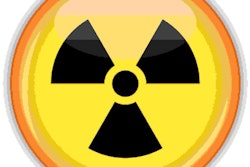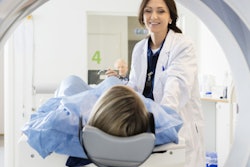
Radiation dose for coronary CT angiography (CCTA) exams can be reduced by as much as 68% -- without hindering diagnostic image quality -- simply by lowering the tube voltage, according to the findings of a multicenter study recently published online in JACC: Cardiovascular Imaging.
Overall levels of radiation dose from CCTA scanning have decreased by nearly 80% over the past decade, from a median of 12 mSv to 2.7 mSv, according to studies such as the sixth Prospective Multicenter Registry on Radiation Dose Estimates of Cardiac CT Angiography in Daily Practice (PROTECTION VI). The implementation of radiation dose-reduction strategies such as tube-current modulation and iterative reconstruction has played a major role to that end, noted first author Dr. Thomas Stocker of Ludwig Maximilian University of Munich and colleagues.
To further improve the safety of CCTA scanning, Stocker and colleagues conducted a subanalysis of PROTECTION VI that included 4,006 patients who underwent CCTA exams at one of 61 imaging sites in various locations throughout the world. They specifically examined the effect that applying different tube voltages, or tube potentials, had on radiation dose and image quality (JACC Cardiovasc Imaging, June 12, 2019).
The researchers discovered that CCTA exams performed using low tube voltages (either 90 to 100 kVp or ≤ 80 kVp) were associated with reductions exceeding 50% for CT dose index (CTDIvol) and dose-length product, compared with the conventional tube-voltage range of 110 kVp to 120 kVp. These reductions led to statistically significant decreases in median radiation dose and volume of contrast agent required.
| Effect of varying tube voltages on CCTA radiation dose | ||||
| Tube voltage ≤ 80 kVp | Tube voltage = 90-100 kVp | Tube voltage = 110-120 kVp | Tube voltage ≥ 130 kVp | |
| CTDIvol | 6.9 mGy | 11.1 mGy | 22.8 mGy | 46 mGy |
| Dose-length product | 98 mGy x cm | 156 mGy x cm | 310 mGy x cm | 632 mGy x cm |
| Median radiation dose | 1.4 mSv | 2.2 mSv | 4.3 mSv | 8.8 mSv |
| Contrast agent volume | 60 mL | 70 mL | 80 mL | 90 mL |
Despite slightly increasing image noise, the dose reductions did not negatively affect overall image quality; the proportion of CCTA scans with high diagnostic image quality (i.e., clearly depicting all coronary arteries) was approximately 98% at all tube voltages.
Tube voltage should be set as low as technically possible and reasonably achievable for CCTA exams since doing so significantly reduces radiation dose and contrast agent volume, without altering image quality -- ultimately improving patient safety, the authors noted.
Yet considerable variability in the application of low tube potential protocols continues across the globe.
"Even 10 years after the PROTECTION I study, a large number of sites are not adequately using reduced tube voltage and are exposing patients to higher radiation doses than in many cases may be needed," Dr. Troy LaBounty from the University of Michigan wrote in an accompanying editorial.
"These findings should prompt action by scanner manufacturers, cardiovascular societies, researchers, and regulators to uniformly improve the safety of patients imaged using CCTA," he concluded.



















